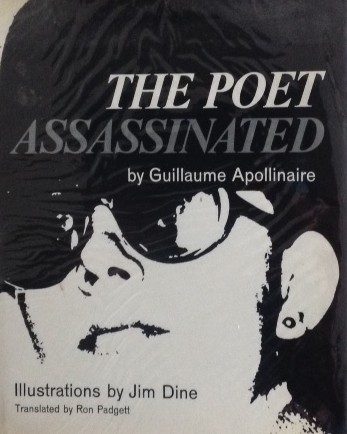Inspiring Older Readers
 posted on 27 Feb 2017
posted on 27 Feb 2017
The Poet Assassinated by Guillaume Apollinaire illustrated by Jim Dine
The poetry and prose of Guillaume Apollinaire is thought of as one of the seminal bodies of work in the early years of the twentieth century. Although he died young, towards the end of the First World War, he was influential on emerging art movements like Surrealism, Futurism and Dada and he lived a life that defined the notion of the artistic Bohemian.
He wrote The Poet Assassinated in 1916 and this edition represents its first formal translation (by Ron Padgett) into English. With his untimely death in 1918 this work stands as something of a fantastical autobiography in which the poet takes on the identity of Croniamantal, a poet whose life is a roistering round of adventure and encounters with very thinly disguised portraits of some of the great artists of the time, including Picasso and Max Jacob.
What Apollinaire gives us here is here is a chaotic but engagingly impressionistic idea of what life in pre-First World War Paris must have been like for this exciting new artistic clique.
This 1968 edition is illustrated by the U.S. artist, Jim Dine who quickly developed a reputation as a key figure in the Pop Art movement and was, appropriately enough, often described as a neo-Dadaist. Dine was one of the early conceptual artists and made a reputation for his Happenings - art events in which he worked with the musician, John Cage.
In this edition of The Poet Assassinated Dine attempts something quite audacious, telling a parallel story in images that sits alongside Apollinaire’s text and indirectly comments upon it. Using black and white photography in conjunction with montages of images, Dine builds a sense of both fun and unease that is particularly unsettling – he cuts across the poet’s pre-war Paris with images that are resonant of the experimental New York of the Sixties.
This is not an easy book to engage with – it takes concentration and some work from the reader. However, it’s a rich experience and very much a product of its time. In many ways if you want to understand the spirit of Sixties experimentation in art and literature this is very much a seminal text.
The good news is that, unaccountably, 1968 first edition copies of the book can be picked up on the second hand market for well under £20. I have no idea why they are so cheap but go and grab yourselves a copy.
Terry Potter
February 2017






